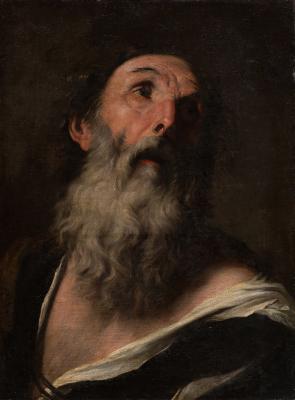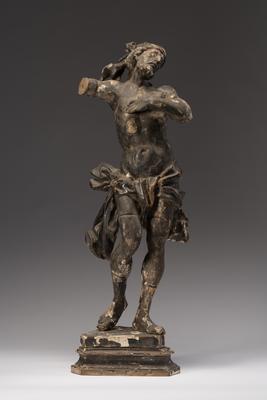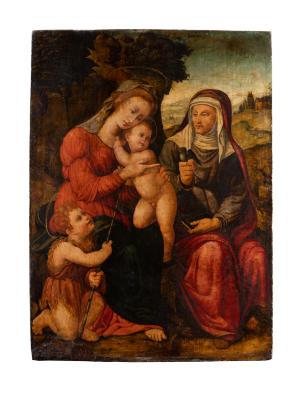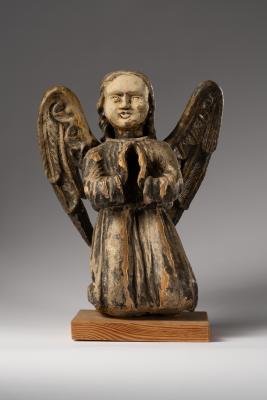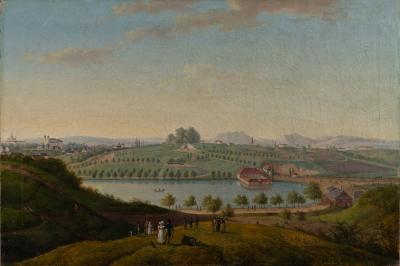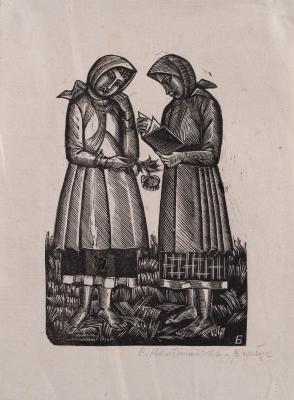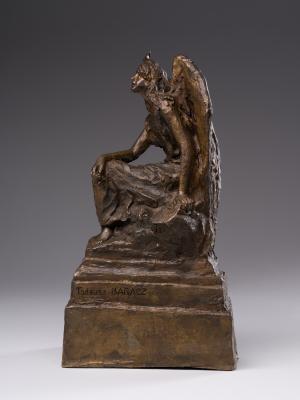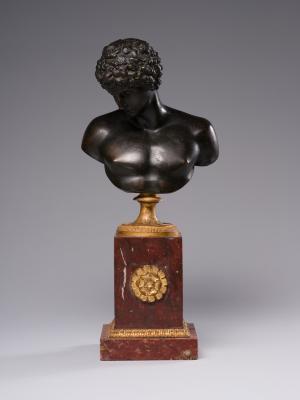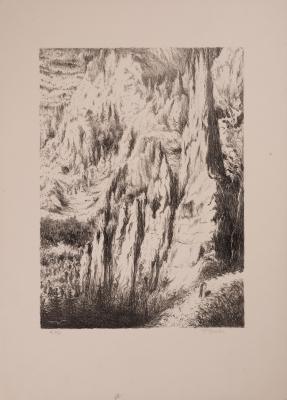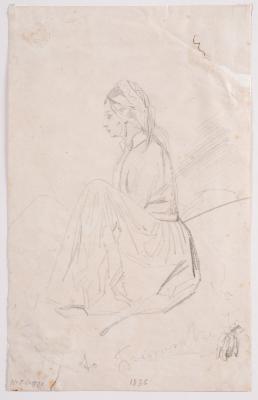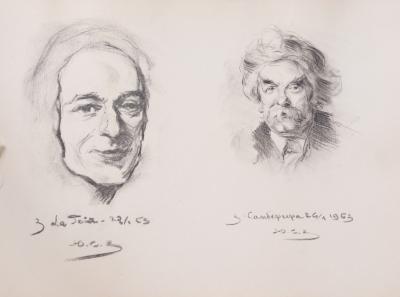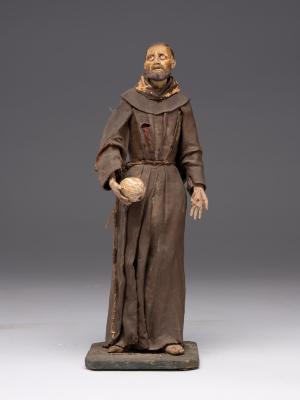Presumably, the work dates back to 1816. It is included in the album Raccolta di Cinquanta Costumi li più interessanti delle città, terre e paesi in provincie diverse del Regno di Napoli (Collection of Fifty Most Interesting Picturesque Costumes from Cities, Towns, and Villages of Different Provinces of the Kingdom of Naples) published by Giovanni Scudellari in Rome in 1817. Bartolomeo Pinelli frequently repeated this composition in different versions. Very close to it is the engraving "Seller of Sorbet (Sherbet)", later known as a lithography. In the foreground are bright figures of the Neapolitans performed in the unique author's style. This is a young man filling a girl's handkerchief with roasted chestnuts. Nearby, one can see the girl's mother with her hand outstretched to the seller. Obviously, she is giving a coin to the seller as a payment. The characters are shown in one of the squares of Naples between the religious buildings with Vesuvius in the background, whose top is seen in the distance. The characters' clothing is painted with bright colours, while the distant views – with dimmed ocher and blue ones.







